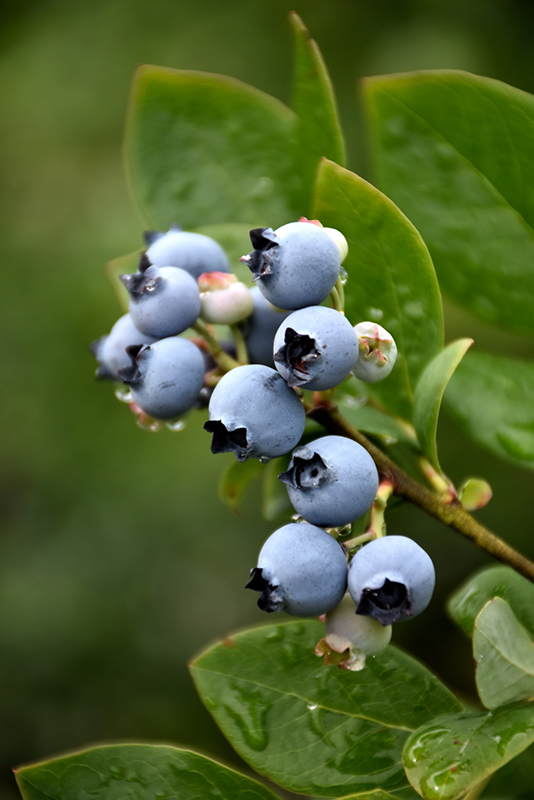Height: 24 inches
Spread: 3 feet
Sunlight:
![]()
![]()
Hardiness Zone: 3a
Other Names: half-high bush blueberry
Group/Class: half-high bush blueberry
Description:
A very hardy hybrid blueberry with an upright open habit, produces bumper crops of tasty, sweet blue fruit in mid summer; all blueberries require highly acidic soils, excellent drainage and a good mulch, plant with plenty of peat moss
Edible Qualities
Northblue Blueberry is a small shrub that is commonly grown for its edible qualities, although it does have ornamental merits as well. It produces clusters of blue round berries which are typically harvested when mature. The berries have a sweet taste and a juicy texture.
The berries are most often used in the following ways:
- Fresh Eating
- Cooking
- Baking
- Preserves
Features & Attributes
Northblue Blueberry features dainty clusters of white bell-shaped flowers with shell pink overtones hanging below the branches in mid spring. It has green deciduous foliage. The glossy oval leaves turn an outstanding orange in the fall. It features an abundance of magnificent blue berries in mid summer.
This is a multi-stemmed deciduous shrub with an upright spreading habit of growth. Its relatively fine texture sets it apart from other landscape plants with less refined foliage. This is a relatively low maintenance plant. Each spring, cut back all dead and two-year old canes to the ground, leaving only last year's growth standing. It is a good choice for attracting birds and bees to your yard. It has no significant negative characteristics.
Aside from its primary use as an edible, Northblue Blueberry is sutiable for the following landscape applications;
- Orchard/Edible Landscaping
Planting & Growing
Northblue Blueberry will grow to be about 24 inches tall at maturity, with a spread of 3 feet. It tends to be a little leggy, with a typical clearance of 1 foot from the ground. It grows at a fast rate, and under ideal conditions can be expected to live for approximately 20 years. While it is considered to be somewhat self-pollinating, it tends to set heavier quantities of fruit with a different variety of the same species growing nearby.
This shrub is quite ornamental as well as edible, and is as much at home in a landscape or flower garden as it is in a designated edibles garden. It does best in full sun to partial shade. It does best in average to evenly moist conditions, but will not tolerate standing water. It is very fussy about its soil conditions and must have sandy, acidic soils to ensure success, and is subject to chlorosis (yellowing) of the foliage in alkaline soils. It is quite intolerant of urban pollution, therefore inner city or urban streetside plantings are best avoided, and will benefit from being planted in a relatively sheltered location. Consider applying a thick mulch around the root zone in winter to protect it in exposed locations or colder microclimates. This particular variety is an interspecific hybrid.
Pollinator partner:
In some regions this variety does not need a pollinator to produce fruit. Northcountry blueberry can be used to cross.

